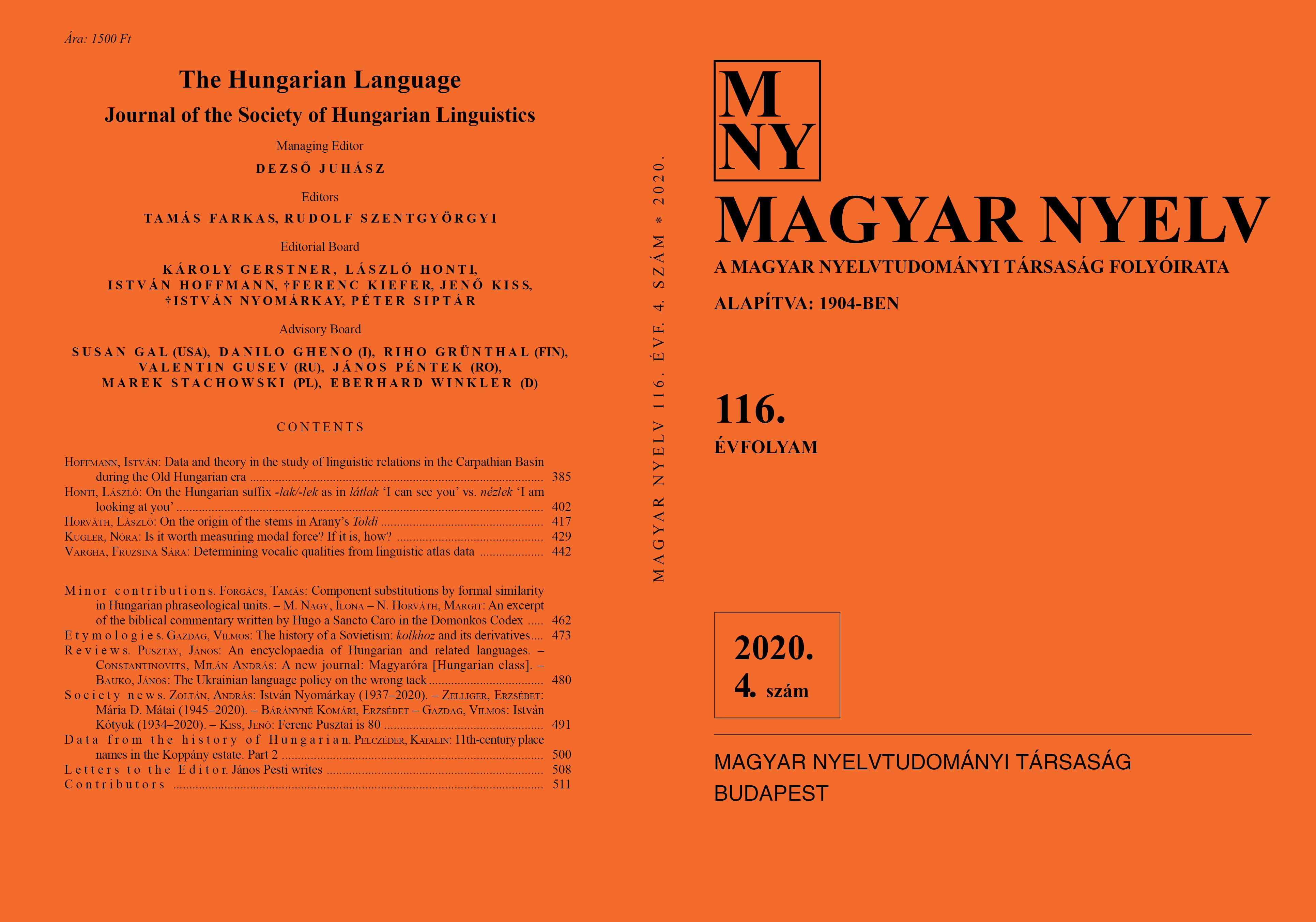On the origin of the stems in Arany's Toldi
DOI:
https://doi.org/10.18349/MagyarNyelv.2020.4.417Keywords:
Toldi, etymological statistics, statistics of origin of stems, inventory statistics, occurrence statisticsAbstract
The author has been working on etymological statistics for more than twenty years now. In 2017, he compiled a statistics of origin of the most widely known Hungarian epic poem, János Arany’s Toldi, with respect to the inventory and occurrence (types and tokens) of the words and lemmas occurring in it. The present paper is a counterpart of the 2017 paper, complementing it in some respects. This time, the author explores the proportions of categories of origin with respect to the stems of the words included in the poem. On the one hand, the results are compared to those of the earlier study, and on the other hand, the present paper is intended to serve as a basis of comparison for similar studies in the future. The author hopes that the results of his analyses can be utilised at various levels of education from primary schools to doctoral studies.
Downloads
Published
Issue
Section
License
Copyright (c) 2024 László Horváth

This work is licensed under a Creative Commons Attribution-NonCommercial-NoDerivatives 4.0 International License.
Magyar Nyelv is a Diamond Open Access periodical. Documents can be freely downloaded and duplicated in an electronic format, and can be used unchanged and with due reference to the original source. Such use must not serve commercial purposes. In the case of any form of dissemination and use, Hungarian Copyright Act LXXVI/1999 and related laws are to be observed. The electronic version of the journal is subject to the regulations of CC BY-NC-ND (Creative Commons – Attribution-NonCommercial-NoDerivatives).
The journal permits its authors, at no cost and without any temporal limitation, to make pre-print copies of their manuscripts publicly available via email or in their own homepage or that of their institution, or in either closed or free-for-all repositories of their institutions/universities, or other non-profit websites, in the form accepted by the journal editor for publication and even containing amendments on the basis of reviewers’ comments. When the authors publicize their papers in this manner, they have to warn their readers that the manuscript at hand is not the final published version of the work. Once the paper has been published in a printed or online form, the authors are allowed (and advised) to use that (post-print) version for the above purposes. In that case, they have to indicate the exact location and other data of the journal publication. The authors retain the copyright of their papers; however, in the case of an occasional secondary publication, the bibliographical data of the first publication have to be included.



